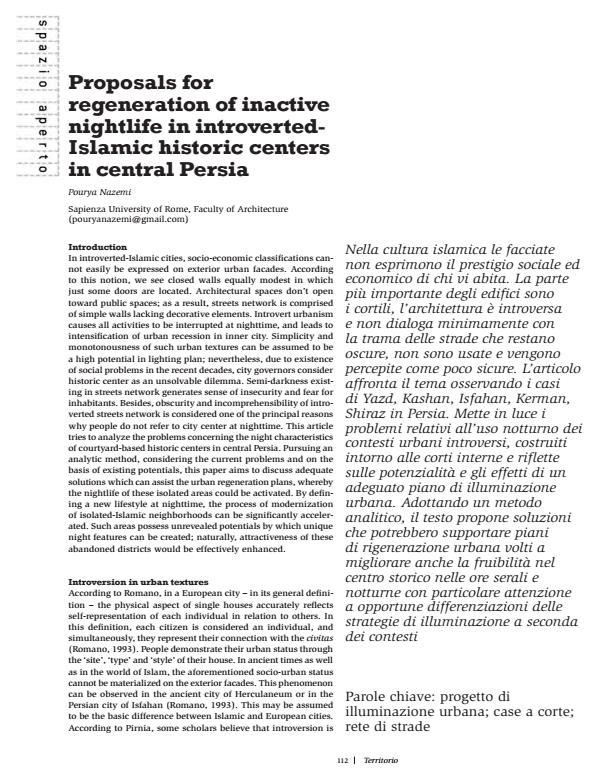Proposals for regeneration of inactive nightlife in introverted-Islamic historic centers in central Persia
Journal title TERRITORIO
Author/s Pourya Nazemi
Publishing Year 2014 Issue 2014/69
Language Italian Pages 11 P. 112-122 File size 590 KB
DOI 10.3280/TR2014-069017
DOI is like a bar code for intellectual property: to have more infomation
click here
Below, you can see the article first page
If you want to buy this article in PDF format, you can do it, following the instructions to buy download credits

FrancoAngeli is member of Publishers International Linking Association, Inc (PILA), a not-for-profit association which run the CrossRef service enabling links to and from online scholarly content.
Nella cultura islamica le facciate non esprimono il prestigio sociale ed economico di chi vi abita. La parte più importante degli edifici sono i cortili, l’architettura è introversa e non dialoga minimamente con la trama delle strade che restano oscure, non sono usate e vengono percepite come poco sicure. L’articolo affronta il tema osservando i casi di Yazd, Kashan, Isfahan, Kerman, Shiraz in Persia. Mette in luce i problemi relativi all’uso notturno dei contesti urbani introversi, costruiti intorno alle corti interne e riflette sulle potenzialità e gli effetti di un adeguato piano di illuminazione urbana. Adottando un metodo analitico, il testo propone soluzioni che potrebbero supportare piani di rigenerazione urbana volti a migliorare anche la fruibilità nel centro storico nelle ore serali e notturne con particolare attenzione a opportune differenziazioni delle strategie di illuminazione a seconda dei contesti
Keywords: Progetto di illuminazione urbana; case a corte; rete di strade
Pourya Nazemi, Proposals for regeneration of inactive nightlife in introverted-Islamic historic centers in central Persia in "TERRITORIO" 69/2014, pp 112-122, DOI: 10.3280/TR2014-069017